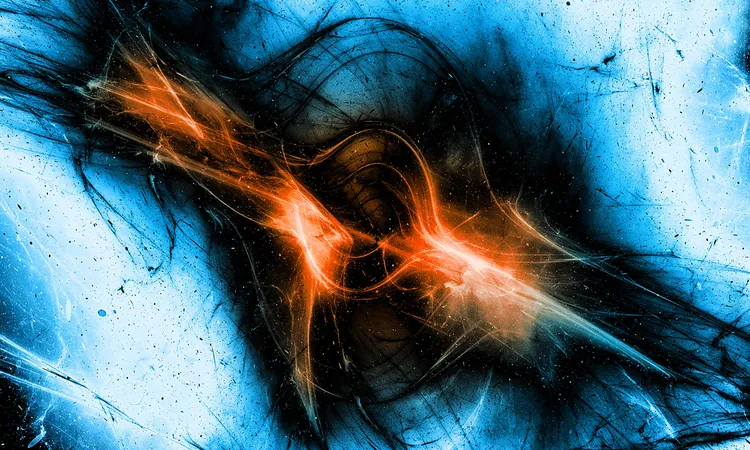
Shocking New Study Claims Dark Matter is a Myth and Age of Universe is 27 Billion Years
2024-10-14
Author: Wai
Overview of Gupta's Study
The cosmos has been a source of intrigue for centuries, but a groundbreaking new study led by Rajendra Gupta, a physics professor from the University of Ottawa, is challenging everything we thought we knew. Are dark matter and dark energy simply figments of our scientific imagination? Gupta's bold research posits that the universe is actually 27 billion years old, fundamentally shifting our understanding of cosmic history.
Theoretical Foundations
At the heart of Gupta's investigation are two unconventional theories: covarying coupling constants (CCC) and "tired light" (TL). Traditionally, we have accepted that the fundamental constants of nature remain unchanged. However, Gupta’s CCC theory suggests these constants could vary across the universe, dramatically altering how we perceive everything from atoms to galaxies.
Tired Light Theory
Meanwhile, the TL theory provides a revolutionary perspective on light redshift—the phenomenon where light from distant galaxies appears redder as it travels. While current explanations attribute this redshift to the universe's expansion, Gupta argues that it's possible light loses energy over cosmic distances, leading to its alteration in wavelength without requiring an expanding universe.
The CCC+TL Model
By merging these theories, Gupta presents a CCC+TL model intended to explain cosmic phenomena without invoking dark matter or dark energy. This is particularly significant since dark matter has long been thought to comprise about 27% of the universe, providing the necessary gravitational glue to hold galaxies together.
Historical Context
Historically, astronomer Fritz Zwicky first proposed the existence of dark matter in the 1930s when he observed galaxies moving in ways that could not be explained by visible matter alone. This observation led to a cascade of findings affirming dark matter’s crucial role in cosmic structure formation.
Challenging Established Norms
Gupta, however, dismisses the necessity of dark matter's existence by asserting that his study is the first comprehensive analysis challenging its cosmological relevance while aligning with key astronomical observations.
The Age of the Universe
With a stunning assertion that the universe's true age is approximately 26.7 billion years, Gupta's findings contradict the dominant cosmological narrative that places the universe at 13.8 billion years old. He argues that instead of dark energy driving cosmic acceleration, these phenomena result from the weakening forces of nature over time.
Data Analysis and Implications
His research delves into the intricacies of "redshift" data, scrutinizing galaxy distributions and cosmic observations to strengthen his case against dark matter. His findings raise pivotal questions that could unravel our standard cosmological models, including the widely accepted Big Bang theory.
Skepticism and Future Research
Critics, however, remain skeptical. They point to the vast array of data supporting existing models, including the consistent physical laws that govern our universe. For the CCC+TL model to gain traction, it must generate verifiable predictions that can withstand rigorous testing.
Looking Ahead
Looking to the future, researchers are eager to devise experiments to scrutinize the validity of Gupta's claims. As technology advances—especially in telescopes and observational tools—the scientific community is poised to either buttress or challenge these revolutionary ideas.
Conclusion
Ultimately, while the cosmos remains an intricate puzzle, Gupta’s research opens the door to new possibilities and prompts us to rethink concepts we once considered set in stone. Will the CCC+TL model redefine our understanding of the universe, or will it fade into the annals of speculation? Only time—and further scientific inquiry—will tell.



 Brasil (PT)
Brasil (PT)
 Canada (EN)
Canada (EN)
 Chile (ES)
Chile (ES)
 España (ES)
España (ES)
 France (FR)
France (FR)
 Hong Kong (EN)
Hong Kong (EN)
 Italia (IT)
Italia (IT)
 日本 (JA)
日本 (JA)
 Magyarország (HU)
Magyarország (HU)
 Norge (NO)
Norge (NO)
 Polska (PL)
Polska (PL)
 Schweiz (DE)
Schweiz (DE)
 Singapore (EN)
Singapore (EN)
 Sverige (SV)
Sverige (SV)
 Suomi (FI)
Suomi (FI)
 Türkiye (TR)
Türkiye (TR)